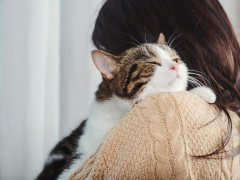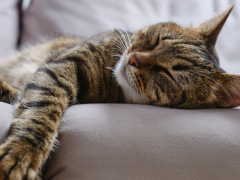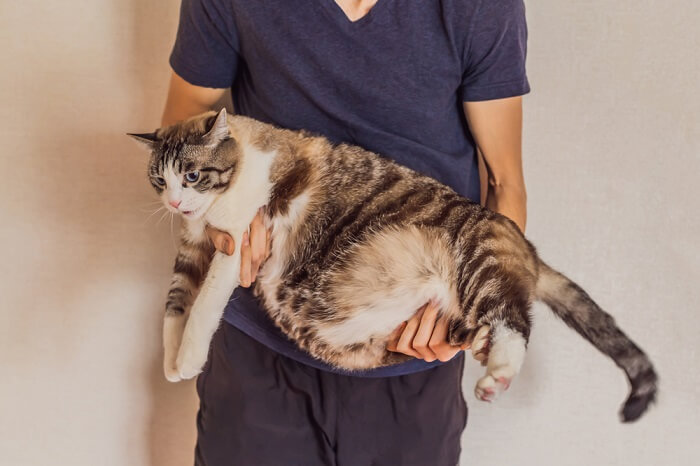
This article aims to explain the details of high cholesterol in cats, a condition that can happen in cats for a number of reasons. The aim of this article is to provide a simple, clear explanation about cholesterol levels, whether low, high and normal, for cat owners.
Quick Overview: High Cholesterol In Cats






What Is Cholesterol?
Cholesterol is a type of fat (or lipid) that is made by all body cells, providing a key part of the cell membrane (the envelope that surrounds every cell). It’s also produced by liver cells, where it acts as a key ingredient for the creation of steroid hormones, bile acids, some enzymes, and vitamin D.
Other types of fat (lipids) in the body include triglycerides, fatty acids and phospholipids, which are used as an energy source as well as forming part of the structure of cell membranes, and also being used in the manufacture of other substances such as hormones.
How Are Fats and Cholesterol Connected in Cats?
Fats, including cholesterol, are carried in the blood in complex compounds that also contain protein: so-called lipoproteins.
These include triglycerides, cholesterol and phospholipid linked to apopproteins, which are manufactured in cells of the liver and intestines. Apolipoproteins are synthesized in the liver or in intestinal cells.
There are four major lipoprotein classes in cats, as follows:
- Chylomicrons (CM) and Very low density lipoproteins (VLDL) carry triglycerides in the blood
- Low density lipoproteins (LDL) and High density lipoproteins (HDL) carry cholesterol in the blood. In cats, HDL outnumbers LDL by 5:1, while in humans, LDL is the main carrier of cholesterol.
Many humans are aware of these abbreviations from their own blood test results, but it’s important to remember that the significance of abnormal levels is very different in humans compared to cats.
What Levels of Cholesterol Are Normal?
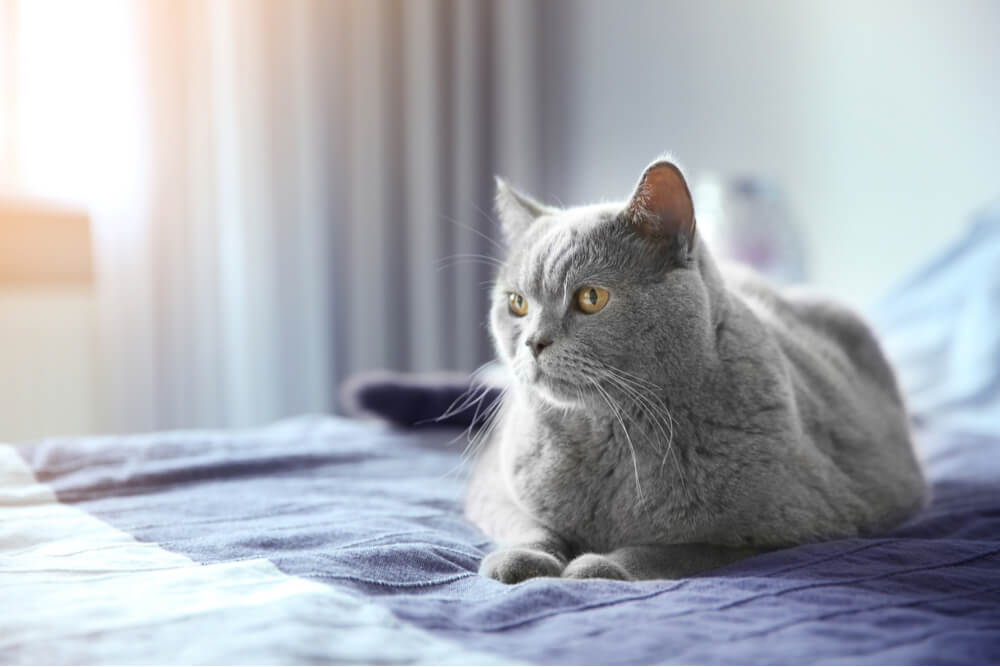
Cats who are fed too much may become overweight.
Normal homeostatic mechanisms keep the levels of lipids, including cholesterol, within certain specific parameters. A number of disease processes can cause abnormally high lipid and cholesterol levels: these are often measured as part of blood test profiles that are carried out when assessing the health of individual cats.
The normal level of cholesterol in cats is from 1.8 – 3.9 mMol/liter (90–200 mg/dL)
What Happens When Cholesterol Levels Go Wrong?
Altered levels of cholesterol do not generally cause a problem in themselves; when this is identified, the significance is more that it’s an indication about some other possible internal metabolic problem. The changes in cholesterol level are seen as a “clue”, while other tests are generally needed to make a firm diagnosis.
Cholesterol in cats is primarily produced by the liver and excreted in the bile.
Logically, reduced cholesterol levels happen when production in the liver slows down, in situations such as liver disease and diabetes mellitus, or if a cat has stopped eating.
Low levels may rarely be seen in dyslipoproteinemias, which are primary disorders of lipoprotein metabolism: these have a genetic basis and are more likely to be seen in Burmese cats and domestic shorthair cats (In the dog world, Miniature Schnauzers are prone to this)
Elevated cholesterol levels (hypercholesterolemia) are seen in a wide range of situations, especially when excretion of cholesterol in the bile is reduced.
Causes of Hypercholesterolemia in Cats
The most common causes are:
- Hepatic disease, especially anything obstructing the outflow of bile from the liver (cholestasis) e.g. liver disease, gall bladder disease, bile duct obstruction, pancreatitis (the pancreas is immediately adjacent to the bile duct opening), etc.
- Hyperadrenocorticism (Cushings Disease) due to over-production of cortisone hormones by the adrenal gland
- Iatrogenic Cushing’s disease (high levels of corticosteroids/ prednisolone medication)
- Some other medications e.g. Methimazole and carbimazole, both used to treat hyperthyroid cats
- Kidney disease (such as acute nephritis or nephrotic syndrome)
- Thyroid disease such as hypothyroidism, or hyperthyroidism if it is being treated with methimazole or carbimazole
- High fat diets, or the administration of high omega-3 fatty acid supplements such as fish oil
- Obesity
Symptoms of High Cholesterol Levels in Cats
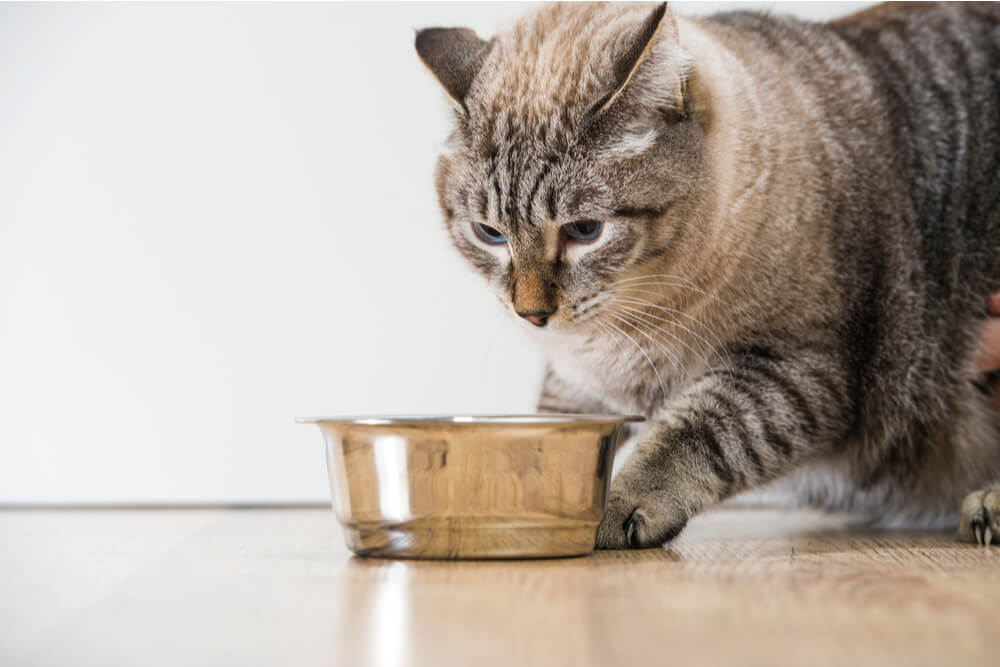
The main cause of fatty liver disease is excessive body fat. When an overweight or obese cat doesn’t eat for an extended period of time, fat spreads through the body.
Specific clinical signs associated with high cholesterol in cats are not generally seen; any signs of illness are likely to be caused by the underlying cause of the raised cholesterol rather than the simple fact of the elevated level.
Can cats get heart disease due to elevated cholesterol levels
It’s important to stress that the human type of heart disease (atherosclerosis: the narrowing of cardiac arteries, caused by high cholesterol levels) is not seen in cats, so cats do not have a risk of heart disease following high cholesterol levels.
Diagnosis of High Cholesterol Levels in Cats
If your DVM veterinarian is investigating your cat for any reason at all, they may discover high cholesterol levels. It’s unlikely that they will specifically request only cholesterol to be checked; it is far more likely that a panel of blood tests will be done, including cholesterol, and when reviewing the results, the elevated level may be noticed.
If the cholesterol level is identified as being elevated, your veterinarian will probably review your cat’s situation, to check for possible underlying disease. This may include the following.
1. Detailed History Taking
Your vet will discuss every aspect of your cat’s life and health care, including everythiung from daily routines to gastrointestinal function. This history will help to differentiate the various possible causes of elevations of cholesterol levels.
2. Physical Examination
Your veterinarian will check your cat over carefully, noting any physical signs of illness, checking in particular for signs of the possible causes of high cholesterol levels.
3. Routine Blood Tests
A blood sample may be repeated to double check the cholesterol level: it’s important that this blood work is carried out on a fasting blood sample, if possible as post-prandial (after eating) levels may be artificially elevated. Serum triglyceride levels (fats) may be measured at the same time, as these are linked to cholesterol.
Higher levels of fats (lipids) in the blood are referred to as hyperlipidemia, and this may or may not also be present in a cat with high cholesterol levels. Hyperlipidemia can be caused by increased concentrations of cholesterol, high triglycerides, or both of these.
Other routine tests are often carried out at the same time e.g. complete blood count (CBC), routine biochemistries, etc to identify any metabolic disorders which could be linked to the high cholesterol level.
4. Other Tests:
Radiography (x-rays) and ultrasound may be carried out, as part of a general work up of a sick cat. Your veterinarian will advise you on whether or not such detailed investigations are indicated.
Treatment For High Cholesterol Levels
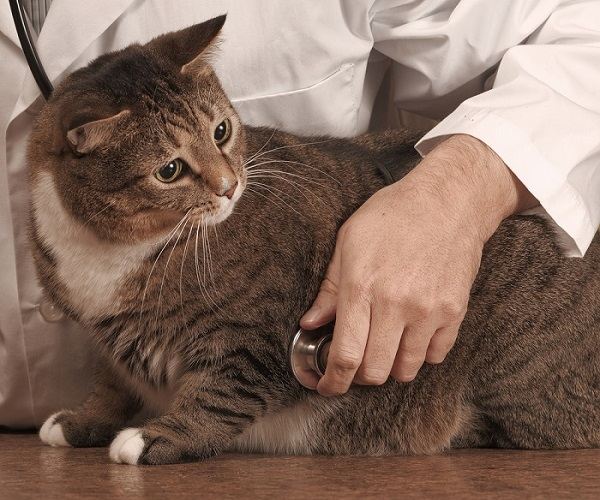
High fat diets or the administration of high omega-3 fatty acid supplements such as fish oil can cause high cholesterol in cats.
Specific treatment for high cholesterol levels is not generally needed, but the underlying cause of high cholesterol may need to be treated. Your vet will advise you accordingly.
If the issue is general hyperlipidemia, including high cholesterol, a low fat diet may be recommended, as well as medication such as gemfibrozil which is used in humans to lover blood fat levels.
High blood cholesterol in cats is seen from time to time, and it is not a concern by itself. Rather, this is a sign of some type of underlying condition, and when this is seen, your veterinarian may suggest a more detailed work up to identify the precise reason for this abnormality.
Frequently Asked Questions
What causes high cholesterol in cats?
The most common causes are linked to reduced excretion of cholesterol, namely outflow obstruction of bile from the liver (liver disease, gall bladder disease, etc), hyperadrenocorticism (Cushings Disease), some medications (cortisone/ prednisolone, methimazole and carbimazole) and some types of kidney disease. High cholesterol may also be seen in obese cats, or cats on high fat diets.
Do cats need cholesterol?
Cholesterol is needed to create cell membranes (the envelopes that surrounds every cell), as well as for the creation of steroid hormones, bile acids and vitamin D.
What is feline hyperlipidemia?
Hyperlipidemia means high level of fats in the blood: this can be caused by increased concentrations of cholesterol, triglycerides, or both of these.
Which animal has the lowest cholesterol?
All species of mammals, birds and reptiles require cholesterol as part of normal cell structure and the creation of other important biochemicals, so no species of animal has a dramatically low cholesterol level compared to others.





